
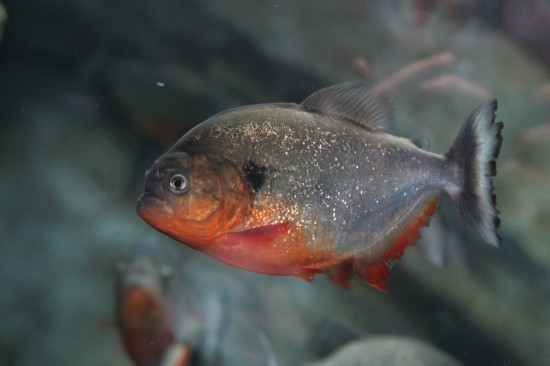
The star of many horror films, this meat eater is actually an intriguing pet for the exotic pet owner. They do not deserve their fearsome reputation, and make great pets for the intrepid owner.
It is highly unlikely a piranha will bit or attack you if it is kept well-fed in spacious conditions. They rarely attack anything as large as a human even in the wild, preferring to attack fish or smaller injured animals. It is probably unwise to try feeding by hand in case they confuse a finger for a worm.
Length can vary, but most will have the same characteristics. They are a solid looking fish, being quite broad from top to bottom fin. Their head is blunt, with a large bottom jaw. This will be lined with lots of tiny razor-like teeth used to strip their prey. As a predator, they are fairly muscular to move at great speed.
There is a lot of choice in the UK with breeders and exotic pet shops having a range available. Each species will need its own special environment, and some may not be ideal for an owner new to piranhas.
Red-bellied piranha – commonly found in exotic pet shops, they are the original piranha found in the Amazon. Featured in many films, they are actually scavengers and fairly timid.
Caribe – also with a red belly, they have a black spot behind their gills to differentiate themselves from the Red-Bellied Piranha. They tend to be more expensive than the Red-Bellied cousin as they do not breed well in captivity. Many on the market are actually live caught in Venezuela.
Ternetzi – a golden bellied fish from the depths of Brazil. They prefer to be kept in groups, and need a tank with a smooth bottom.
Piraya – very rare, expensive and aggressive. This is not a beginners piranha. With an orange belly, silver eyes and a protruding jaw it is an attractive if dangerous pet.
Rhombeus – known as the Black Piranha, it has a bright red eye. They grow to 18 inches in length, and prefer to be kept alone. They are light grey in colour with triangular scales.
Brandtii – growing up to 10 inches long, they become gold when reaching adulthood. Their scales are iridescent which makes them very attractive. They are the most aggressive of all piranhas, and will not shy away from the tank even from humans.
Elongatus – this is a stream lined piranha, built for quick attacks. Their shape has given the nickname of Pike Piranha. They hunt alone, so will need to be kept in a tank on their own. They differ in personality. Some will be shy and timid, whereas others will attempt to attack fingers when being fed.
Spilopleura – despite only being small, they will attack the fins of other fish in the tank. They are a bossy little fish! It comes in two types, Gold and Ruby Red Spilo.
Geryi – one of the more beautiful patterned piranha, they have a purple strake running down their body. They are hard to keep in shoals, so new owners should keep them alone in a tank.
Manueli – growing up to 16 inches long, this is a rare fish to keep as a pet. They need to be live caught and transported from South America to UK breeders – not many survive. They are green tinged with silver, and have orange gills and eyes.
You will need to consider the size of your tank carefully before you buy. Experts recommend allowing 2 gallons per inch of the fish’s length. This gives the fish plenty of space to move, and keep healthy. The tank will also need to be heated so the water is 80 degrees Fahrenheit. You will need to check the temperature often. Kept too warm will cause them to be deprived of oxygen, which can destroy their nervous system. Too cold will affect their immune system, so they are more likely to pick up diseases.
Despite being predators, piranhas are also prey in the wild. They will need plenty of places to hide to feel safe, especially when you are feeding. They like any form of hiding space, plants or aquarium driftwood. At least half of your tank should be covered so they can dart into the undergrowth when scared.
As piranhas can be very messy, you will need to filtrate your tank’s water continuously so the water isn’t toxic. Many owners use a number of small filters so they can change them on a rota without stopping filtration. Piranhas naturally live in a flowing river, so making a natural current will help keep them fit as well as keep the water moving around the tank. It should be strong and steady.
Ten to fifteen per cent of the water in the tank should be changed weekly. This will keep the tank free of disease and remove a lot of debris.
In the wild piranha will eat the scales and fins of other fish. They also eat vegetable matter. You can mirror this by feeding a variety of frozen and freeze dried fish foods, and vegetables such as raw potato and spinach. If you plant live plants in the tank they may need to replaced often, as the fish will graze on them. For fresh meat you can feet them beef heart with the fat removed, prawns and lean chicken meat.
Piranhas need to only be fed once every other day. They should be able to eat everything you put in the tank within two minutes. If any food is left, you will need to remove it to keep the water fresh.
It largely depends on the breed you plan to keep. Most species can be kept with small fish if they are well fed. They will not be considered possible food. With a big tank piranhas have been kept with larger fish, but will occasionally try to bite their fins.
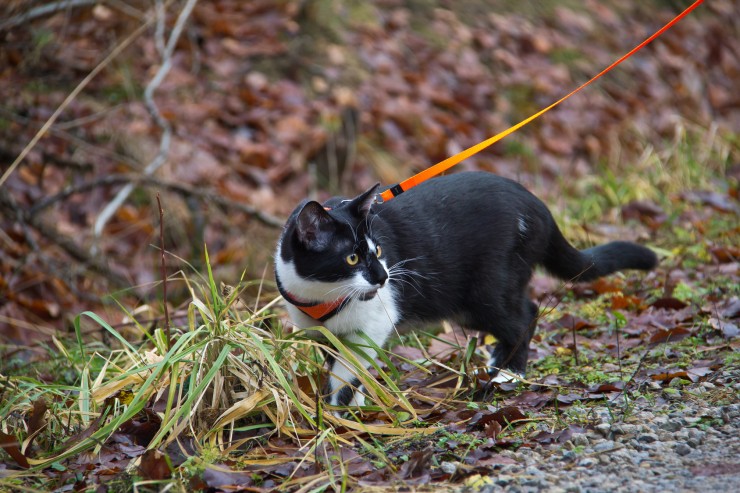 Taking Your Cat For A Walk On A Lead
Taking Your Cat For A Walk On A Lead
 Pet Care Training and Grooming Tips for Your Beloved Dogs
Pet Care Training and Grooming Tips for Your Beloved Dogs
 Disease prevention for your dog, without vaccination
Disease prevention for your dog, without vaccination
 The Ideal Chicken Houses for Your Hens at Cost Effective Prices
The Ideal Chicken Houses for Your Hens at Cost Effective Prices
 Six Subtle Symptoms Of Ill Health In The Dog That Are Easy To Miss
Six Subtle Symptoms Of Ill Health In The Dog That Are Easy To Miss
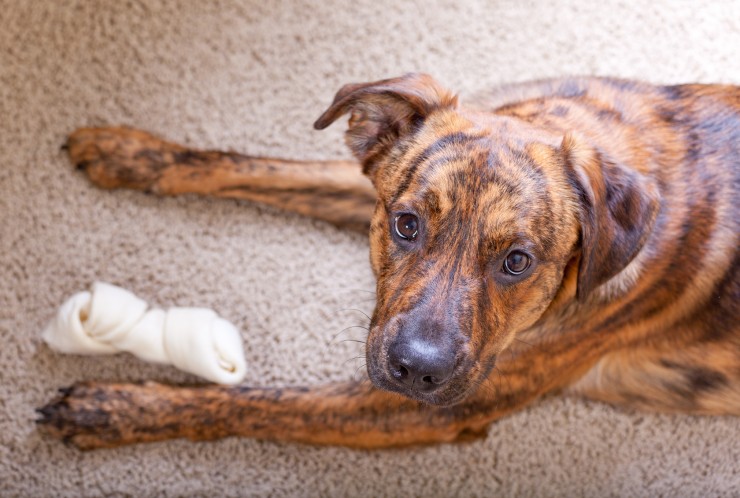 Why Do Some Dogs Scratch And Tear Up Carpets?
Why Do Some Dogs Scratch And Tear Up Carpets?
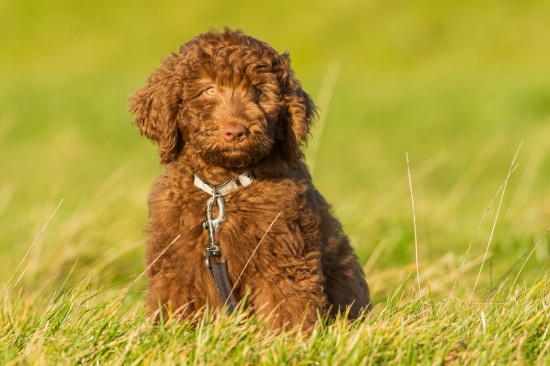 Labradoodle Or Goldendoodle - Which Makes The Best Pet?
Labradoodle Or Go
Labradoodle Or Goldendoodle - Which Makes The Best Pet?
Labradoodle Or Go
 Keeping Your Dog Safe And Happy On New Year’s Eve
Keeping Your Dog
Keeping Your Dog Safe And Happy On New Year’s Eve
Keeping Your Dog
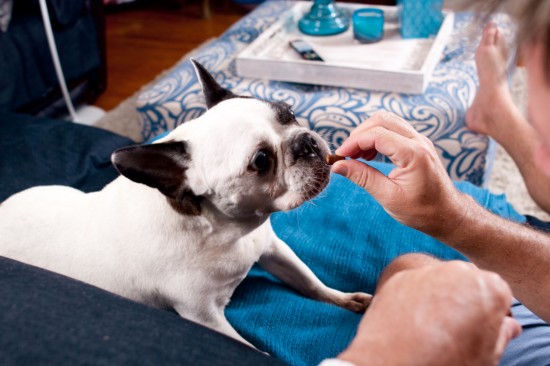 Treats For Dogs With Sensitivities
Treats For Dogs W
Treats For Dogs With Sensitivities
Treats For Dogs W
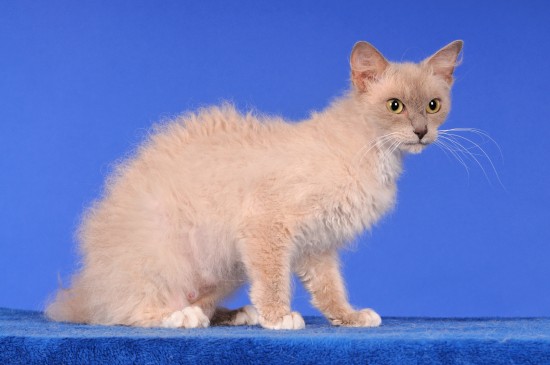 All About Laperm Cats In The Uk, And What Is Required For Pedigree Registration
All About Laperm
All About Laperm Cats In The Uk, And What Is Required For Pedigree Registration
All About Laperm
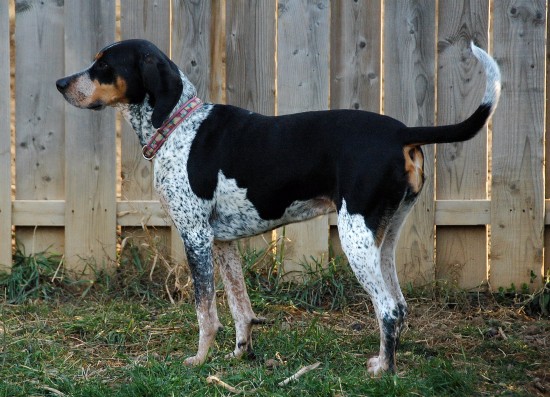 More Information On The Bluetick Coonhound
More Information
More Information On The Bluetick Coonhound
More Information
Copyright © 2005-2016 Pet Information All Rights Reserved
Contact us: www162date@outlook.com